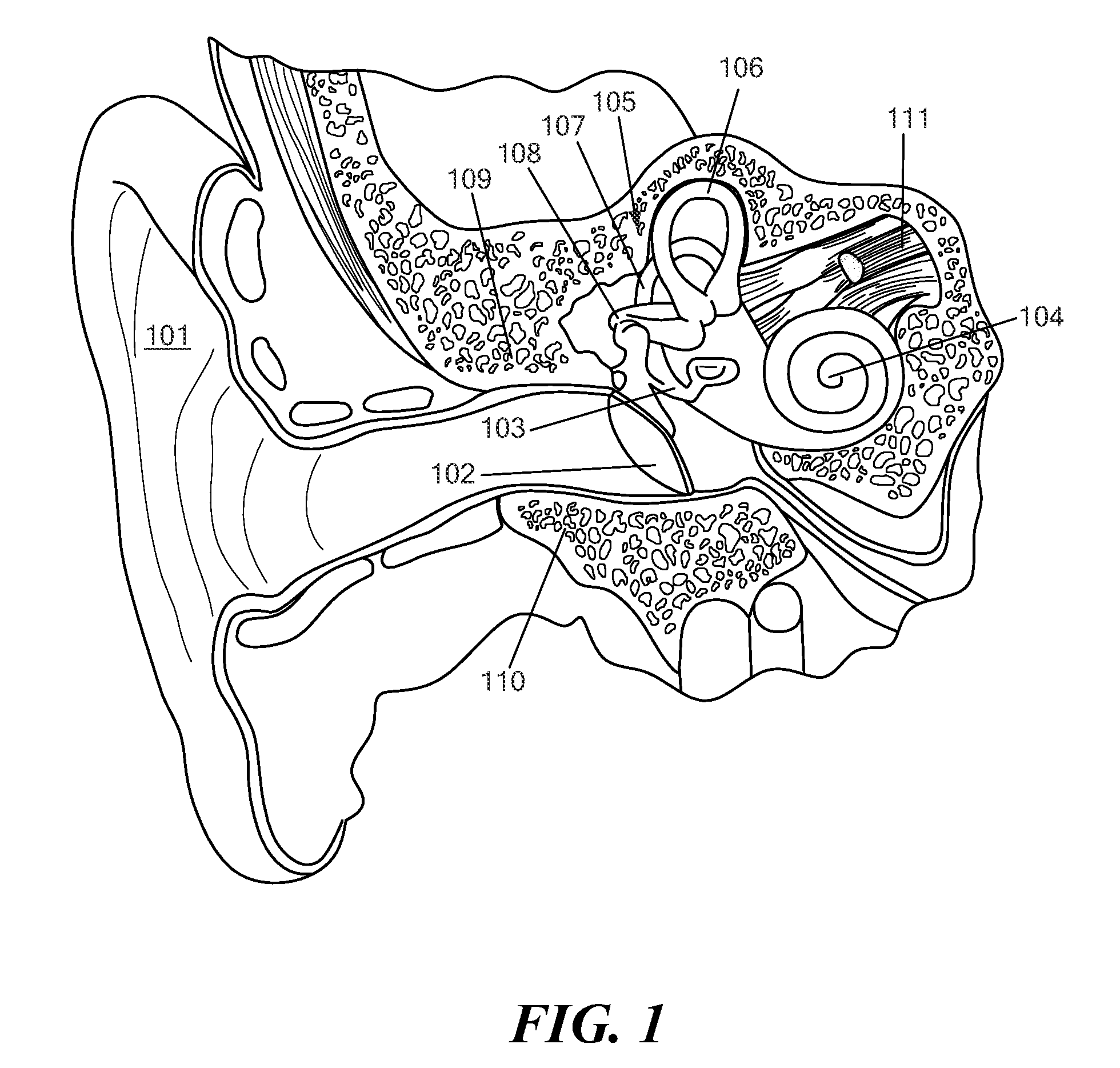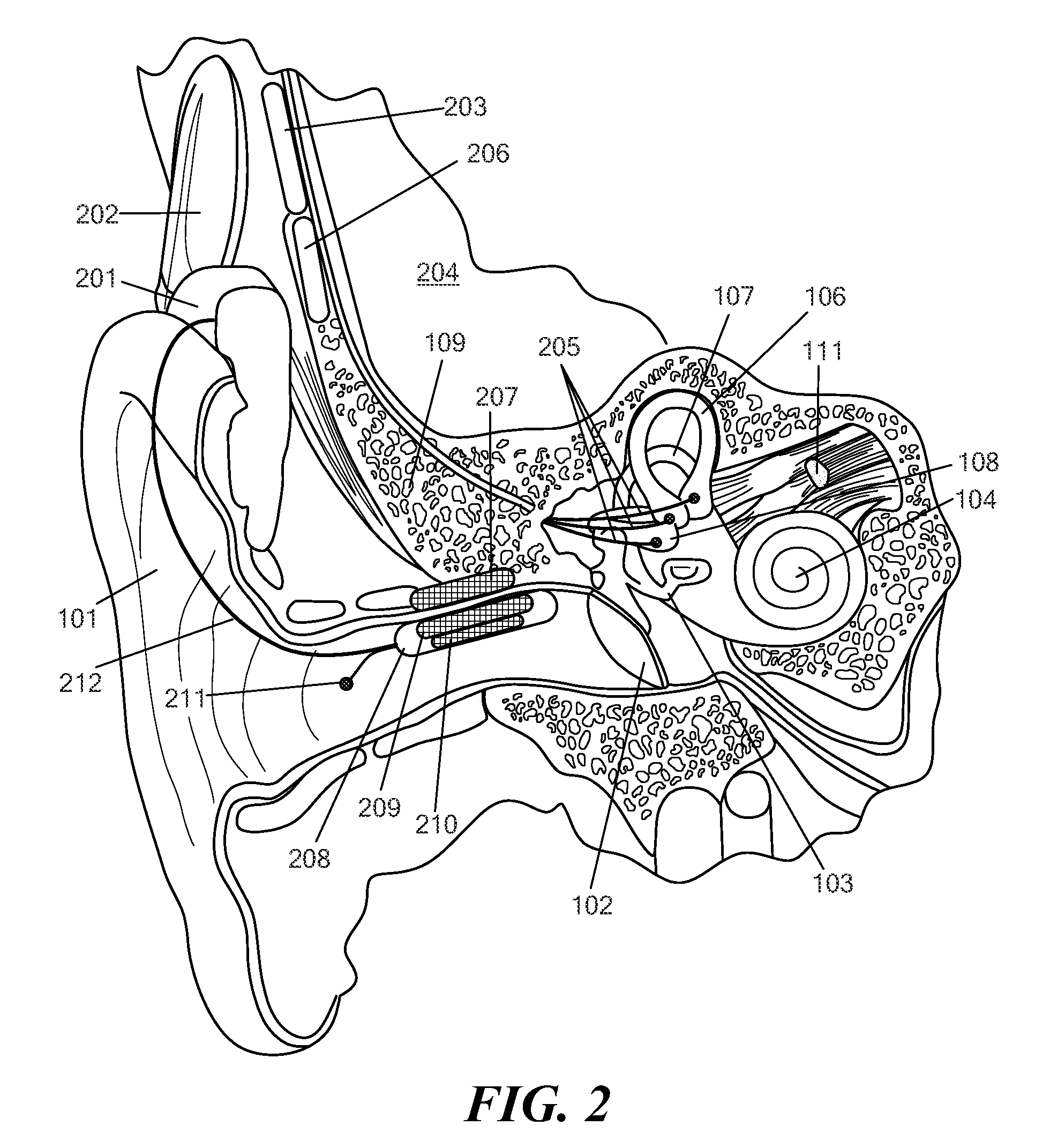Vestibular Implant System with Internal and External Motion Sensors
a technology of motion sensor and implant system, which is applied in the field of implantable stimulation systems, can solve problems such as unsteadiness, vertigo, and unsteady vision, and achieve the effects of reducing the risk of stroke, and improving the quality of li
- Summary
- Abstract
- Description
- Claims
- Application Information
AI Technical Summary
Benefits of technology
Problems solved by technology
Method used
Image
Examples
Embodiment Construction
[0025]Embodiments of the present invention are directed to a safe, practicable and wearable partially implantable vestibular prosthesis system which combines both internal and external movement sensors. By making appropriate design choices, many of the drawbacks from earlier approaches can be avoided. For example, in some embodiments the internal implant movement sensor can be mainly used as a backup signal source for a few hours (depending on the battery life of the implant battery) when the main externally worn movement sensor is unavailable or unreliable. Other embodiments may use an implanted movement sensor as its normal main signal source, with an external movement sensor serving as a system backup signal source in the event of failure by the implanted movement sensor.
[0026]FIG. 2 shows one specific example of a partially implantable vestibular prosthesis system with an external movement sensor 208 that includes a three-axis digital gyroscope array 210 that generates an extern...
PUM
 Login to View More
Login to View More Abstract
Description
Claims
Application Information
 Login to View More
Login to View More - R&D
- Intellectual Property
- Life Sciences
- Materials
- Tech Scout
- Unparalleled Data Quality
- Higher Quality Content
- 60% Fewer Hallucinations
Browse by: Latest US Patents, China's latest patents, Technical Efficacy Thesaurus, Application Domain, Technology Topic, Popular Technical Reports.
© 2025 PatSnap. All rights reserved.Legal|Privacy policy|Modern Slavery Act Transparency Statement|Sitemap|About US| Contact US: help@patsnap.com



